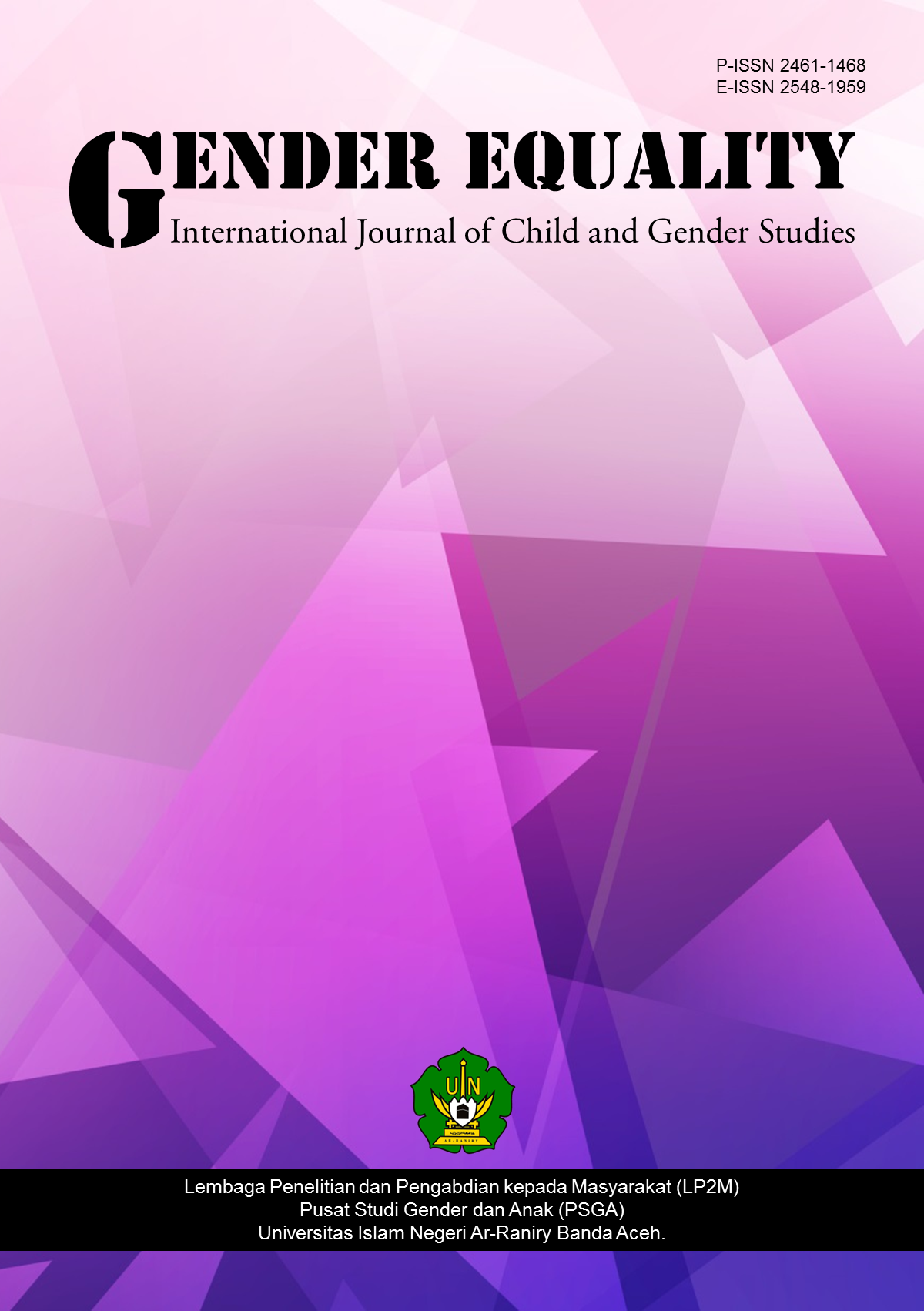PERBEDAAN GAYA BAHASA LAKI-LAKI DAN PEREMPUAN PADA PENUTUR BAHASA INDONESIA DAN ACEH
DOI:
https://doi.org/10.22373/equality.v4i1.4486Keywords:
Gender, bahasa, bahasa laki-laki, bahasa perempuan.Abstract
Dalam berinteraksi dan berkomunikasi, bahasa memiliki peranan penting. Namun,manusia sering mengalami miskomunikasi dalam interaksi sehari-hari. Hal ini disebabkan bahasa memiliki cakupan makna yang luas. Selain itu, setiap orang memiliki gaya berbahasa yang berbeda-beda. Banyak faktor yang mempengaruhi perbedaan tersebut, antara lain, lingkungan, tingkat pendidikan, gender, dan lain-lain. Penelitian ini bertujuan untuk mengetahui perbedaan antara bahasa yang biasa digunakan sehari-hari oleh laki-laki dan perempuan yang berbahasa Indonesia dan berbahasa Aceh dalam kehidupan sehari-hari. Adapun responden yang terlibat meliputi mahasiswa-mahasiswi program pasca sarjana di salah satu perguruan tinggi di Aceh. Percakapan antar perempuan dan laki-laki direkam dan kemudian dianalisa. Dari hasil pengamatan, perempuan terlihat lebih verbal dibandingkan laki-laki. Penelitian ini membuktikan bahwa bahasa laki-laki dan perempuan berbeda pada beberapa aspek yaitu dalam pemilihan topik, dalam pemilihan ucapan seperti intonasi, perbendaharaan kata, dan sintaks, dalam menggunakan sumpah serapah dan bahasa vulgar, dalam gaya percakapan dan dalam mendominasi percakapan.
References
Brizendine, L. (2006). The Female Brain. New York: Morgan Road Books
Chaer, A., & Agustina, L. (2010). Sosiolinguistik Perkenalan Awal. Jakarta: Rineka Cipta.
Coates, J. (1986).Women, Men and Language. London: Longman.
FAO. (2003). Gender: The Key to Sustainability and Food Security. Rome: FAO.
Formkin, F., Rodman, R.,&Hyams, N. (2003). An Introduction to Language. Boston: Heinle.
Hidayat, R.S. (2004). Penulisan dan Gender. Makara Sosial Humaniora, 8(1), 9-15.
Holmes, J. (2001). An Introduction to Sociolinguistics. 2nd ed. Edinburgh: Person Education Limited.
Jesperson, O. (1949). Language. New York: Macmillan.
Jinyu, D. (2014). Study on Gender Differences in Language Under the Sociolinguistics. Canadian Social Science,10 (3), 92-96.
Klein, J. (1971). The family in "traditional" working-class England. In M. Anderson (Ed.), Sociology of the family. Baltimore, Md.: Penguin Books.
Lakoff, R. (1975).Language and Woman's Place. New York: Harper and Row.
Levinson, S. (2001). Pragmatics. Cambridge: Cambridge University Press.
Li, J. (2014). A Sociolinguistic Study of Language and Gender in Desperate Housewives.Theory and Practice in Language Studies, 4 (1), 52-57.
Zimmerman, D.H.,& West, C (1975) „Sex Roles, Interruptions and Silences in Conversation‟. In Thorne, B. and Henley, N. (eds) (1975) Language and Sex: Difference and Dominance. Rowley: Newbury House.
Additional Files
Published
Issue
Section
License
GENDER EQUALITY: International Journal of Child and Gender Studies allows the author(s) to hold the copyright and to retain the publishing rights without restrictions. Authors who publish with this journal agree to the following terms:
- Authors retain copyright and grant the journal right of first publication with the work simultaneously licensed under a Creative Commons Attribution License that allows others to share the work with an acknowledgment of the work's authorship and initial publication in this journal.
- Authors are able to enter into separate, additional contractual arrangements for the non-exclusive distribution of the journal's published version of the work (e.g., post it to an institutional repository or publish it in a book), with an acknowledgment of its initial publication in this journal.
- Authors are permitted and encouraged to post their work online (e.g., in institutional repositories or on their website) prior to and during the submission process, as it can lead to productive exchanges, as well as earlier and greater citation of published work.



